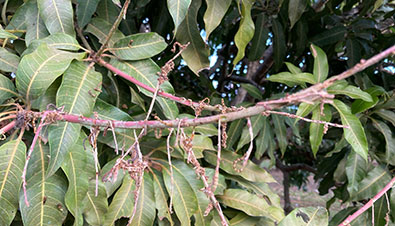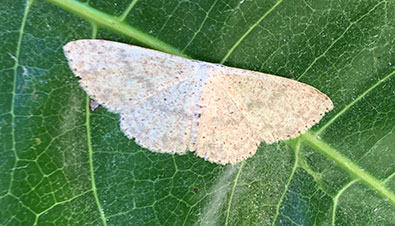Read the latest information on
Foot-and-mouth disease
Mango and lychee growers in Australia should become familiar with and be on the lookout for the exotic pest, Mango shoot looper (Perixera illepidaria) – detected in Far North Queensland last year, and most recently in the Northern Territory.

Mango shoot looper larvae (Perixera illepidaria). Image courtesy of Queensland Department of Agriculture and Fisheries (QDAF).
About mango shoot looper
Mango shoot looper is found in several parts of Asia and can be carried long distances by wind as an adult moth. Mango shoot looper has a short life cycle (15-19 days) and the larvae feed voraciously on mango tree leaves, leaving only the midribs and veins. They also feed on tender shoots, flowers and immature fruit, and can severely damage tree canopies.
Mango and lychee are known hosts, although related plants such as rambutan, longan, cashew and pistachio should also be considered potential hosts.
What to look for
Adults
Larvae (caterpillars)
Pupae

Adult Mango shoot looper moth. Image courtesy of QDAF.
When monitoring for mango shoot looper, look for caterpillars stripping leaves and or flower panicles. Inspect new shoots and immature fruit for similar symptoms. The small larvae are often difficult to see so vigorously shake flower panicles or new flush into a tray or bucket.
The importance of reporting
If you suspect you have seen mango shoot looper, you need to contact your state or territory department of agriculture or primary industries. You can do this by phoning the Exotic Plant Pest Hotline on 1800 084 881.
The Australian Mango Industry Association has also released information on current pesticide management options available to growers.